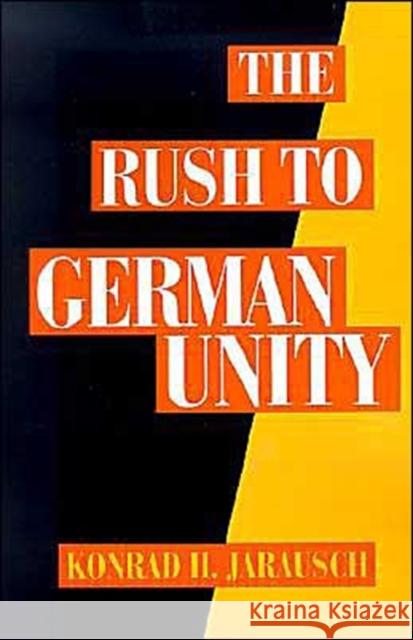The Rush to German Unity » książka
The Rush to German Unity
ISBN-13: 9780195085778 / Angielski / Miękka / 1994 / 304 str.
The bringing down of the Berlin Wall is one of the most vivid images and historic events of the late twentieth century. The reunification of Germany has transformed the face of Europe. In one stunning year, two separate states with clashing ideologies, hostile armies, competing economies, and incompatible social systems merged into one. The speed and extent of the reunification was so great that many people are still trying to understand the events. Initial elation has given way to the realities and problems posed in reuniting two such different systems.
The Rush to German Unity presents a clear historical reconstruction of the confusing events. It focuses on the dramatic experiences of the East German people but also explores the decisions of the West German elite. Konrad H. Jarausch draws on the rich sources produced by the collapse of the GDR and on the public debate in the FRG. Beginning with vivid media images, the text probes the background of a problem, traces its treatment and resolution and then reflects on its implications.
Combining an insider's insights with an outsider's detachment, the interpretation balances the celebratory and the catastrophic views. The unification process was democratic, peaceful and negotiated. But the merger was also bureaucratic, capitalistic and one-sided. Popular pressures and political manipulation combined to create a rush to unity that threatened to escape control. The revolution moved from a civic rising to a national movement and ended up as reconstruction from the outside. An ideal source for general readers and students, The Rush to German Unity explores whether solving the old German problem has merely created new difficulties.











